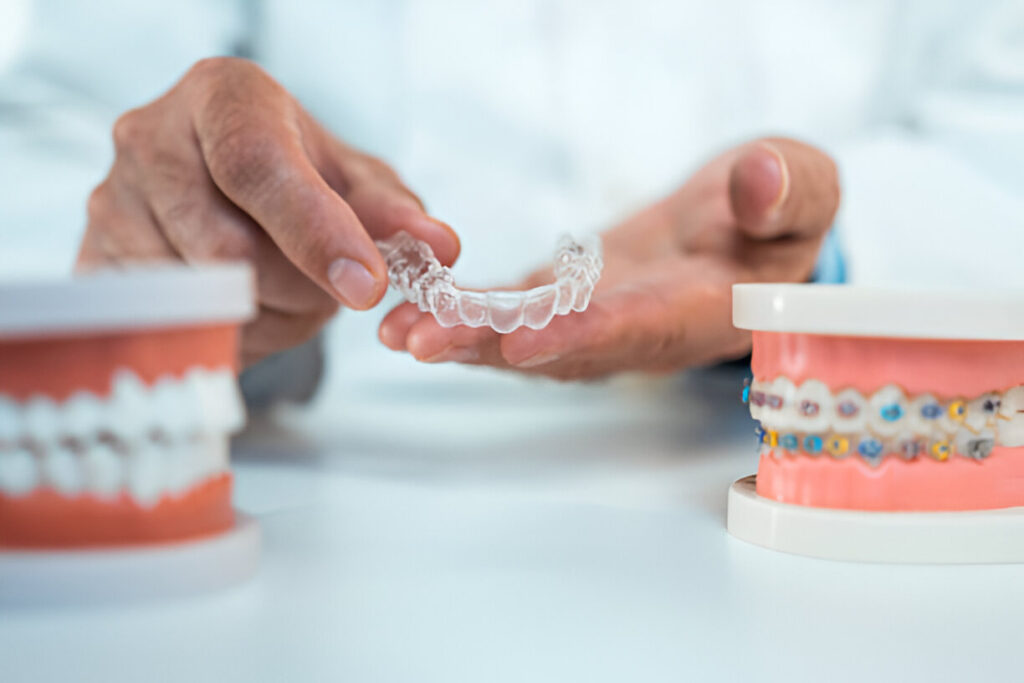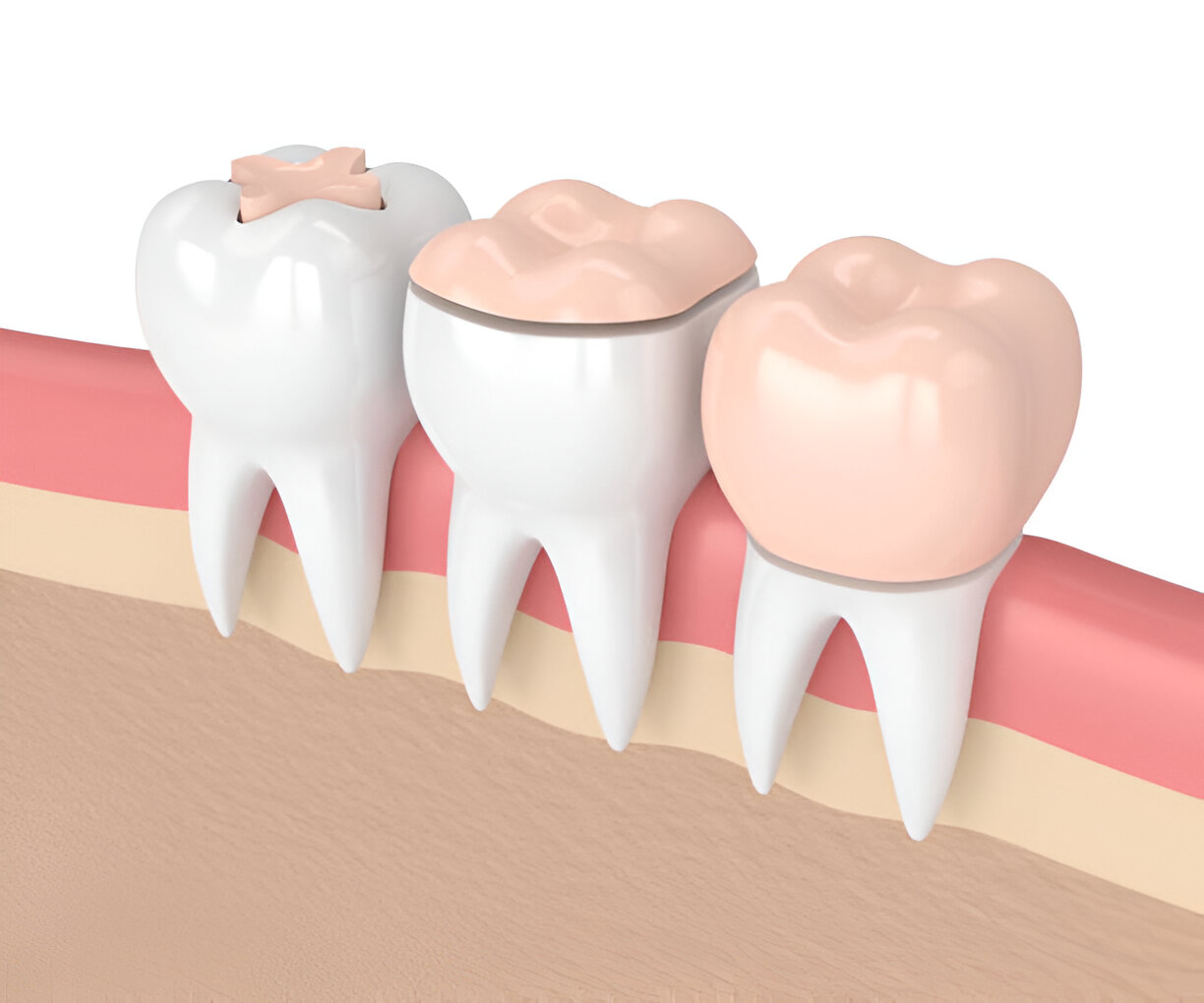When it comes to straightening your teeth, you have two popular choices: Invisalign and traditional braces. Both treatments can give you a great smile, but which one is better? This article will help you understand the differences between Invisalign and braces, so you can decide which is the best option for you, whether you’re seeking an NHS Dentist in Aberdeen or considering private options.
What is Invisalign?
Invisalign is a brand of clear aligners that gradually move your teeth into the right position. These aligners are made from clear plastic, which means they are nearly invisible when you wear them. You wear a new set of aligners every couple of weeks, and they are custom-made to fit your teeth.
What Are Traditional Braces?
Traditional braces are made up of metal brackets and wires that are fixed to your teeth. These brackets are connected by a wire, which is adjusted over time to move your teeth into place. Braces are a tried-and-tested method for straightening teeth, and they work well for many people.
Can You Chew Gum with Invisalign?
The Pros of Invisalign
1. Appearance
Invisalign aligners are clear, which makes them less noticeable than traditional braces. This is one of the main reasons many people choose Invisalign, especially adults or teens who might feel self-conscious about wearing braces. With Invisalign, you can smile confidently during your treatment without feeling worried about your appearance.
2. Comfort
Invisalign aligners are made from smooth plastic, which makes them more comfortable to wear compared to metal braces. Unlike braces, you won’t have to worry about the metal wires rubbing against the inside of your mouth and causing sores. While you may feel some discomfort when you first start wearing each new set of aligners, it’s usually mild.
3. Removable for Eating and Drinking
With Invisalign, you can remove the aligners whenever you eat or drink anything other than water. This means you don’t have to avoid certain foods like nuts, popcorn, or sticky sweets, which you would have to do with braces. After eating, you simply pop the aligners back in.
Can Invisalign Fix an Overbite?
4. Easier to Brush and Floss
Since Invisalign aligners are removable, you can continue to brush and floss your teeth normally. This makes oral hygiene easier compared to braces, where food can get stuck in the brackets and wires, making it more difficult to clean your teeth properly.
5. Fewer Orthodontist Visits
With Invisalign, you’ll typically need fewer visits to the orthodontist. Most of the work happens upfront when the aligners are created, so you don’t need to visit the orthodontist for frequent adjustments. Most people only need to visit every six to eight weeks to monitor their progress.
The Cons of Invisalign
1. Requires Discipline
To get the best results, you need to wear your Invisalign aligners for 20 to 22 hours per day. This means you must remember to put them back in after eating, drinking, or brushing your teeth. If you don’t wear them enough, your treatment may take longer or may not work as well.
How Long Does Invisalign Take to Stop Hurting?
2. Not Suitable for All Cases
Invisalign works well for mild to moderate alignment issues, but it may not be the best option for more complex dental problems. If you have severe overcrowding or significant bite issues, traditional braces might be a better option.
3. Maintenance
While Invisalign is easy to remove, you must remember to clean the aligners regularly to avoid build-up or bad breath. You should rinse them and brush them with a toothbrush each time you remove them.
The Pros of Braces
1. Effective for Complex Cases
Traditional braces are very effective at treating a wide range of dental issues, from mild to severe cases. If you have a complex dental problem, such as severe overcrowding or an overbite, braces are more likely to give you the best result.
2. No Need for Discipline
Unlike Invisalign, you don’t need to worry about remembering to wear your braces. They are fixed to your teeth, so they’ll work constantly without needing any extra effort on your part.
3. Variety of Options
Braces are available in several types, including traditional metal braces, ceramic braces (which are less visible), and lingual braces (which sit behind the teeth). This gives you more options depending on your preferences and budget.
4. Faster Results for Some People
In many cases, braces can provide faster results than Invisalign. This is because braces apply more force to move the teeth and can achieve greater movement in a shorter amount of time.
The Cons of Braces
1. Visibility
The biggest downside of braces is their appearance. Metal braces are very noticeable, which can make some people feel self-conscious. Ceramic and lingual braces are less visible, but they are often more expensive.
2. Discomfort
Braces can cause discomfort, especially after adjustments. The brackets and wires can irritate the inside of your mouth, and you may need to use wax to cover sharp edges.
3. Diet Restrictions
When you have braces, you need to avoid certain foods, such as sticky sweets, popcorn, and hard foods that could damage the brackets or wires. This can be an inconvenience for some people.
4. More Frequent Orthodontist Visits
With braces, you’ll need to visit your orthodontist regularly for adjustments. This means more time spent at the orthodontist’s office compared to Invisalign treatment.
Which Is Better: Invisalign or Braces?
So, is Invisalign better than braces? The answer depends on your specific needs and preferences. If you have a mild or moderate alignment issue, prefer a more discreet treatment, and are committed to wearing your aligners consistently, Invisalign may be the right choice for you. However, if you have more complex dental issues, need faster results, or don’t mind the visibility of traditional braces, then braces might be the better option.
Conclusion
Both Invisalign and traditional braces have their pros and cons. When deciding which is best for you, it’s important to consult with your orthodontist. They can help you understand your options and recommend the treatment that will work best for your smile and your lifestyle.
Schedule your appointment today
Get the Smile You Deserve at Holburn Dental and Implant Centre!
If you’re still unsure whether Invisalign or traditional braces is the right choice for you, the team at Holburn Dental and Implant Centre can help! Book a consultation today and let our experienced professionals guide you to the best treatment option for your smile. Take the first step towards a confident, beautiful smile!
Frequently Asked Question
What is the difference between Invisalign and braces?
Invisalign uses clear plastic aligners to gradually shift teeth, offering a discreet treatment. Braces, on the other hand, involve metal brackets and wires that are fixed to the teeth. Braces are often more suitable for complex dental issues, while Invisalign works well for mild to moderate cases.
Are Invisalign aligners as effective as braces?
Invisalign is effective for treating mild to moderate dental misalignments, but braces may be more effective for complex cases like severe overcrowding or bite issues. Your orthodontist can assess your situation and recommend the best treatment for optimal results.
How long does Invisalign treatment take?
Invisalign treatment typically takes 12 to 18 months, depending on the complexity of your dental issue. For more complex cases, treatment might take longer. Regular checkups with your orthodontist help ensure progress is on track.
Can I eat with Invisalign aligners?
No, Invisalign aligners must be removed before eating or drinking anything other than water. This helps prevent the aligners from being damaged or stained. After eating, make sure to clean your teeth before reinserting the aligners.
Are braces painful?
Braces can cause discomfort, especially after adjustments. The metal brackets and wires may irritate the inside of your mouth. However, this discomfort usually subsides as your mouth adjusts. Invisalign may cause some mild discomfort when you start with a new set of aligners.


